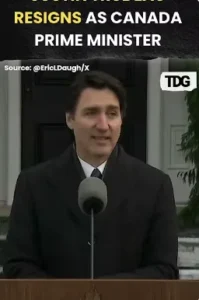A “Productive” Conversation In The Face Of Rising Trade Disputes
On March 28, 2025, US President Donald Trump and Canada’s new Prime Minister Mark Carney had their first phone call. Both the leaders described the conversation as “productive,” providing a ray of hope in the wake of rising trade tensions between the two countries. This conversation takes place in response to the recent US imposition of a 25% tariff on imported cars manufactured abroad, something intended to spur the American automotive sector but that has drawn strenuous responses from Canada.
Background
The US-Canada trade conflict has been simmering for months. President Trump, in January 2025, proposed tariffs on Canada, Mexico, and China due to trade deficits and national security concerns. These tariffs, especially those on the automotive industry, have far-reaching consequences for Canada, considering the extensive integration of North American value chains.
It countered by announcing retaliatory tariffs against a variety of US goods, making it clear that it is willing to safeguard its economic interests. Prime Minister Carney, who replaced Justin Trudeau and became the new Prime Minister on March 14, has been insisting that Canada revisit its economic ties with the US, highlighting the necessity of breaking dependence on a partner he now considers “no longer reliable.”
The Phone Call: Major Talking Points
In their talk, Trump and Carney jointly announced that they would start in-depth negotiations on economics and security after the April 28 federal election in Canada. The pact is reflective of a shared appreciation of the necessity of settling trade tensions through negotiation.
Yet the summons also highlighted long-simmering tensions. President Trump has renewed the threat of additional tariffs and taken taunting stances with regard to the sovereignty of Canada. Prime Minister Carney has kept himself willing to negotiate while vigorously dismissing moves toward suborning the autonomy of Canada and having threatened to execute reprisal against Canadian interests.
Implications for US-Canada Relations
The result of this first set of discussions bodes very highly with respect to what the future portends of US-Canada relations:
- Trade Negotiations: The agreement to commence negotiations post-election indicates a potential pathway to resolving disputes. However, the success of these talks will depend on both parties’ willingness to compromise and address core issues.
- Economic Impact: The tariffs have already started to influence industries on either side of the border. For example, US tariffs on Canadian lumber may result in higher prices for American consumers, potentially creating shortages of items such as toilet paper
- Political Dynamics: The tensions in trade have already energized public opinion in Canada, and the majority has rallied behind Prime Minister Carney for his strong stance. This upsurge in patriotism may begin to impact the future federal election and determine Canada’s trade policies.
Conclusion: A Tentative Step Forward Amid Uncertainty
The initial formal discussion between President Trump and Prime Minister Carney is a hesitant move toward resolving the complicated trade matters between the US and Canada. Although the description of the call as “productive” provides some hope, much work remains to be done. The upcoming negotiations, scheduled to take place after the federal election in Canada, will be critical in deciding if both countries can bridge their differences and create a more stable and equitable economic partnership.























